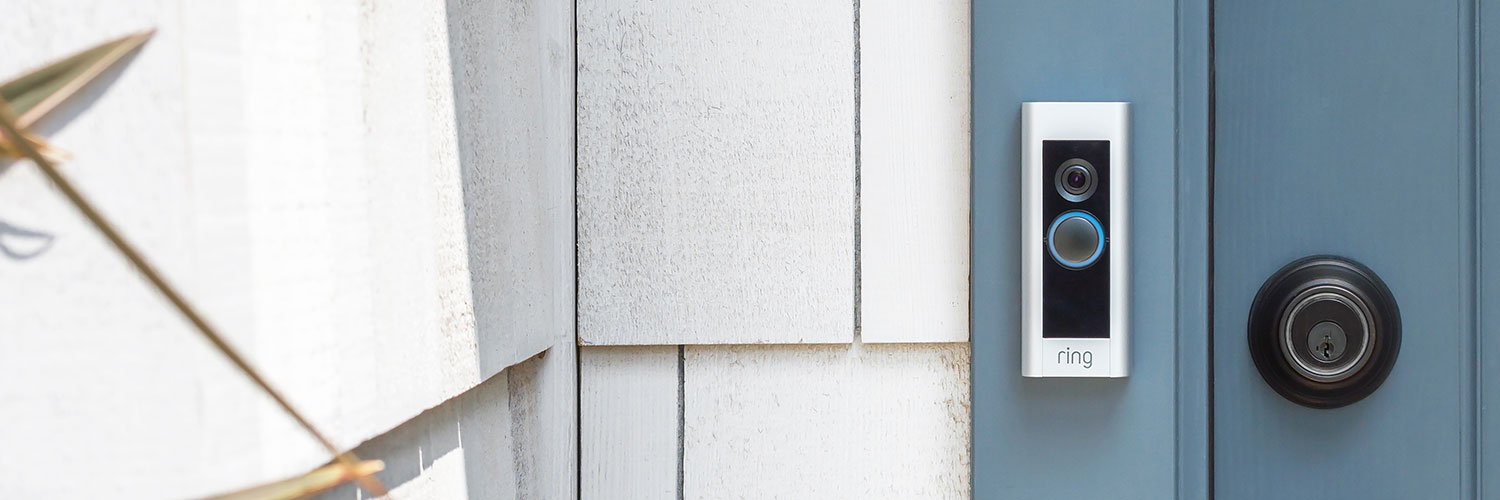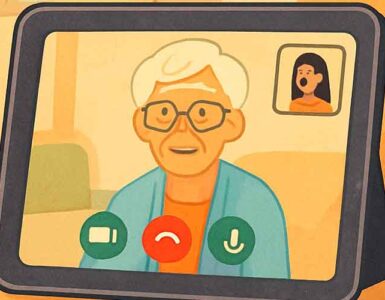One of the most routine activities in the home – answering the door – can present real challenges for people who have disabilities. Wireless video doorbells can alert individuals when someone is at the door, let them see who it is and communicate with them from a smartphone or computer. Video doorbells can also be used to help family members offer support and safety for disabled individuals who live on their own. They can monitor who is coming and going, plus ensure their loved ones make it home safe at night.
Features of video doorbells for people with disabilities
A well-designed video doorbell should feature these functions:
- Allow remote monitoring of the door from any location
- Let the user communicate with the person at the door
- Allow operation through voice controls such as Alexa
- Integrate with other home security and smart home devices, like door locks, either within their own product line or with other brands through the use of IFTTT applets
- Allow storage of video for later review
We’ve selected four video doorbells for people with disabilities. All have proven to be an excellent blend of performance and value.
SkyBell HD WiFi Doorbell
The SkyBell HD WiFi Doorbell covers all of the functions that you need for a disabled-friendly doorbell camera. Skybell connects to your existing doorbell wiring for power and then hooks up to your WiFi network to send video and enable two-way communications through smartphones or tablets. Video is HD quality with color night vision. The SkyBell HD WiFi Doorbell retails for as low as $199.
Pros:
- HD video quality
- Built-in motion sensor and live monitoring
- Free cloud video storage
- Compatible with Nest home protection products
- Low price for the features offered
Cons:
- No web app; requires an iOS or Android smartphone or tablet
- Voice control is limited to Alexa
Ring Video Doorbell 2
Ring produces an entire lineup of different camera doorbells. We’ve selected the Ring Video Doorbell 2 for a number of reasons. Because it can operate off battery power, it’s easier to install than wired models. And the Ring app is notably easy to use and offers useful options like Shared Users, which lets you add additional users to the doorbells video feed. The Ring Video Doorbell 2 retails for $199.
Pros:
- Easy installation
- Motion detection and triggered recording
- HD video with night vision
- Alexa voice control, plus IFTTT applet control of other home devices
- Competitive pricing
Cons:
- Viewing recorded videos requires a subscription
- Recordings don’t prebuffer
- The battery will need to be recharged periodically
Nest Hello
The Nest Hello video doorbell is accessible from both Android and iOS mobile devices, as well as from PC apps. That’s useful if the disabled person is working from a computer and may not have quick access to their mobile device. Nest Hello integrates easily with other Nest home products and devices.
Pros:
- Facial recognition technology identifies people you know
- Pre-recorded audio messages
- Simple, attractive design
- Easy integration with other Nest home products
Cons:
- Face recognition and viewing recorded video requires Nest Aware subscription
- More expensive than comparable offerings
- Wired connection to existing doorbell chime box is required
August Doorbell Cam Pro
August has recently upgraded their Doorbell Cam Pro to improve the motion-sensing capabilities and the video recording. This wired unit connects to the existing doorbell wiring and sets up easily on your WiFi network. Doorbell Cam Pro integrates with August smart locks so you can unlock the door remotely from the same app you answer the door with.
Pros:
- Excellent video and audio quality
- Floodlight feature illuminates video feed at night
- Prebuffering captures video for the 10 seconds before motion detection alerts
- Free basic subscription for video viewing
Cons:
- No IFTTT integration for use with other devices
It’s your choice
Any of the devices we’ve discussed will do a fine job in their primary job as a video doorbell – allowing disabled individuals to know when someone is at the door, see who it is, and communicate with them. When choosing, examine the extras, in particular how important video storage and integration with other smart home devices is to you. Whichever system you choose, video doorbells for people with disabilities can offer greater independence, security and peace of mind.






























My son is totally blind and lives alone in a terraced house. He is looking for a doorbell which allows him to speak to the person ringing the door bell with out having to open the door. It would be great if it were also able to link with an i phone but the Ring door bells we have seen are complex to access for the person who has no sight at all. Do you know of any that are accessible for the blind?